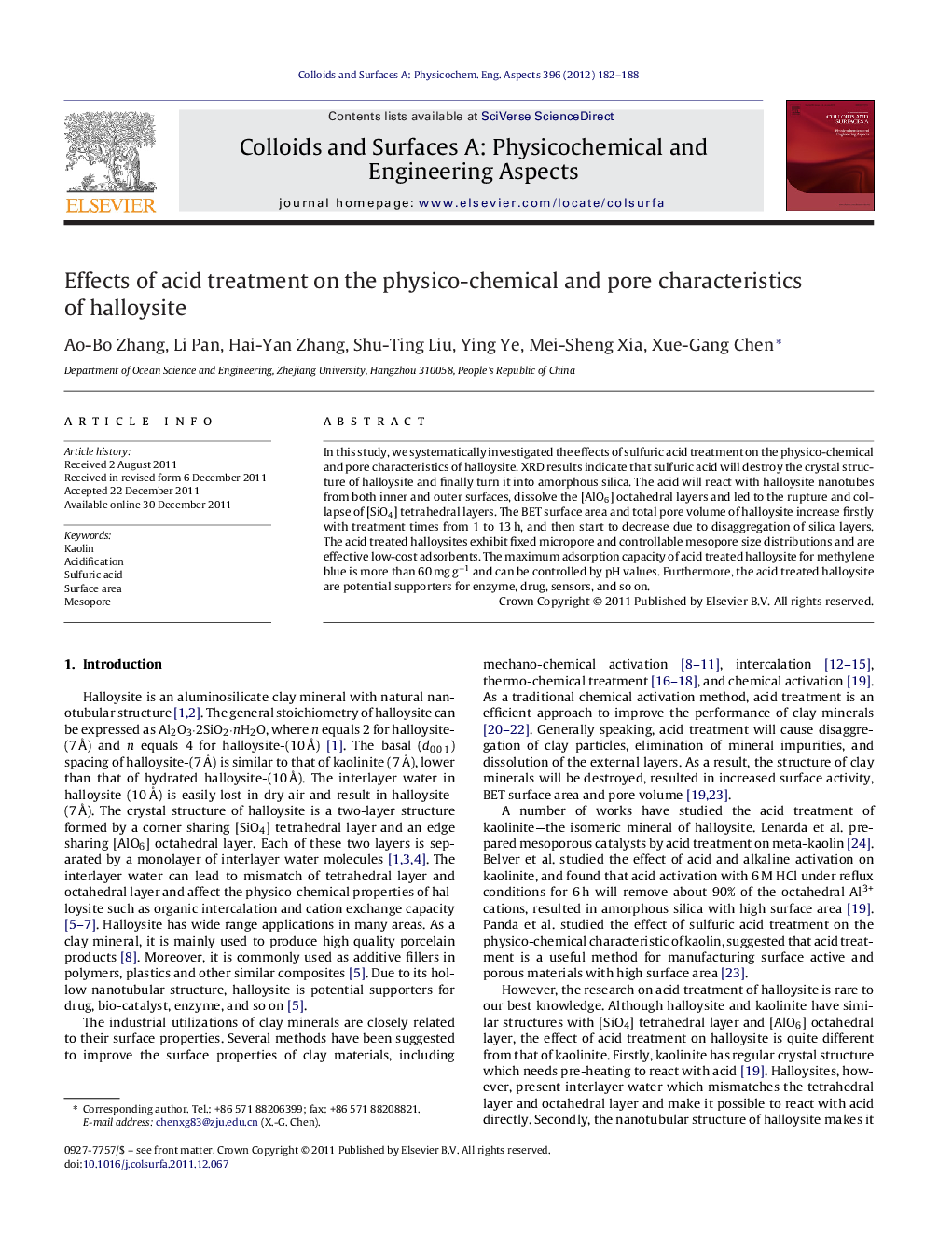| Article ID | Journal | Published Year | Pages | File Type |
|---|---|---|---|---|
| 594303 | Colloids and Surfaces A: Physicochemical and Engineering Aspects | 2012 | 7 Pages |
In this study, we systematically investigated the effects of sulfuric acid treatment on the physico-chemical and pore characteristics of halloysite. XRD results indicate that sulfuric acid will destroy the crystal structure of halloysite and finally turn it into amorphous silica. The acid will react with halloysite nanotubes from both inner and outer surfaces, dissolve the [AlO6] octahedral layers and led to the rupture and collapse of [SiO4] tetrahedral layers. The BET surface area and total pore volume of halloysite increase firstly with treatment times from 1 to 13 h, and then start to decrease due to disaggregation of silica layers. The acid treated halloysites exhibit fixed micropore and controllable mesopore size distributions and are effective low-cost adsorbents. The maximum adsorption capacity of acid treated halloysite for methylene blue is more than 60 mg g−1 and can be controlled by pH values. Furthermore, the acid treated halloysite are potential supporters for enzyme, drug, sensors, and so on.
Graphical abstractFigure optionsDownload full-size imageDownload as PowerPoint slideHighlights► We systematically analyzed the process of sulfuric acid reacted with halloysite. ► Sulfuric acid could react with halloysite directly and finally turned it into amorphous silica. ► TEM images confirmed the rupture and collapse of [SiO4] tetrahedral layers. ► The acid treated products have fixed micropore size and controlled mesopore size distribution.
